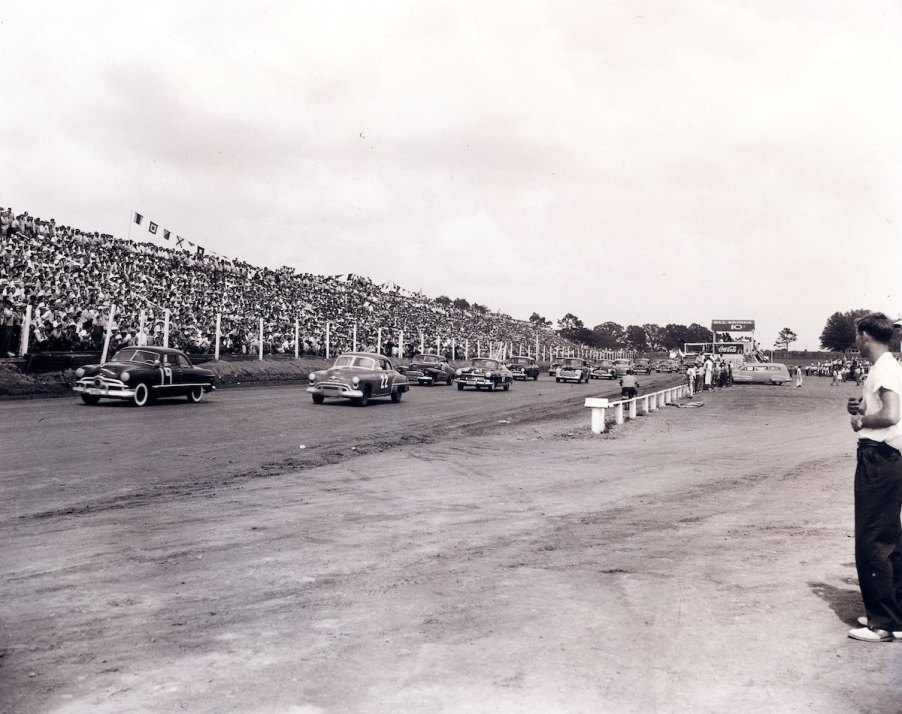
NASCAR is one of the largest auto racing leagues in both the United States and the entire world. Founded in Daytona, Florida, by Bill France Sr. in 1948, it’s now home to numerous sanctioned series, including the Cup Series, Xfinity Series, and Craftsman Truck Series. Each division showcases the unique racing capabilities of its specific type of vehicle, including the current Next Gen car and its ever-growing price point.
NASCAR is more popular than ever, but many people don’t know the surprising origin story. The original founders were not just car enthusiasts but a team of rum-running criminals who helped illegally distribute moonshine during the Prohibition era. Without their innovations, NASCAR might not be around today — at least not in its current form.
Prohibition and fast cars

In January 1920, a nationwide prohibition on alcohol came into effect. During this time, any manufacturing and selling of alcohol was strictly illegal — unless it was for medicinal purposes.
Of course, this didn’t stop locals from producing their own alcoholic beverages, which became known as “moonshine.” The selling of moonshine helped save farmers from the financial struggles that arose due to the Great Depression. Smuggling alcohol from illegal stills or regions in Canada, also known as “bootlegging,” became a major source of revenue and business during the Prohibition era.
During this time, moonshine runners would pack their cars to the brim with cases of alcohol. In order to evade highway patrol officers and revenuers, runners needed to have fast cars. Back in the ’20s, the average max speed of a Ford was 60 mph, so the moonshine drivers had to get creative. They tuned up their cars’ engines to achieve higher speeds and handle breakneck turns without overheating.
These drivers sped through the Appalachian mountains during the night with tons of flammable liquid in the trunk. Not to mention, this was often without headlights to avoid detection by the law.
In addition to making the Ford’s V8 engine even more powerful, some of these cars were equipped with oil slicks or smoke screens to slow down police during a chase.
How whiskey cars became race cars
While the tricked-out cars did an excellent job transporting moonshine, drivers found that they enjoyed the act of simply driving the vehicles. Maneuvering the cars at high speeds while staying ahead of their pursuers required a lot of skill. Sometimes, runners would even challenge each other to see who could complete a run fastest.
In the 1930s, stock car races began to gain popularity at local racetracks and fairgrounds. Some people even paid to watch the drivers.
The formation of NASCAR

Prohibition was repealed in December 1933, but moonshine runners continued to race their cars. One of the earliest stock car races took place at Lakewood Speedway in Atlanta, Georgia, in 1938. The event had 20,000 fans in attendance and was won by Carl D. “Lightning” Lloyd Seay, a legendary racer during his time.
While these races were enjoyable to the drivers and the audience, they lacked official racing rules. Additionally, no set of rules mandated how promoters and owners of the racetracks would pay the drivers.
One racer, Bill France Sr. (or “Big Bill”), stepped up to fix these problems. On Dec. 14, 1947, he called together a team of mechanics, stock car drivers, and car owners to lay the groundwork for future races.
They created uniform rules for each track, discussed guaranteed payment for the racers, and ensured that each driver would have proper insurance. After everything was finalized, NASCAR was officially founded on Feb. 21, 1948. The league continues to hold high-intensity races to this day, with no sign of stopping.


